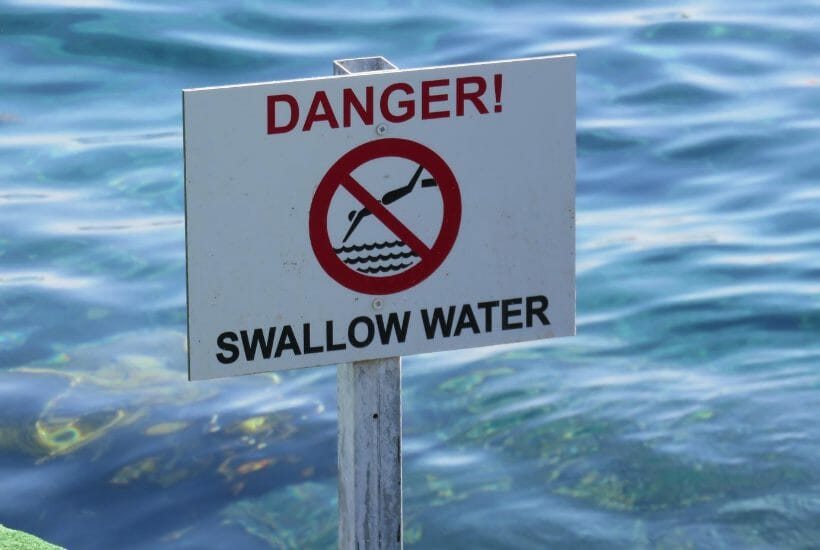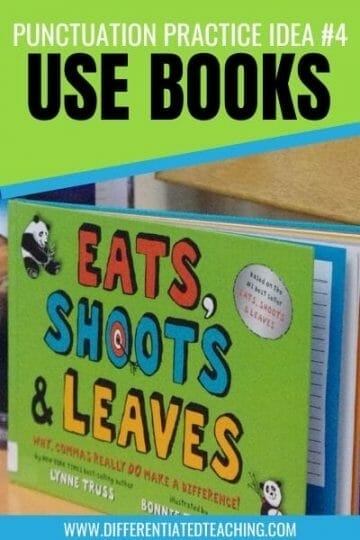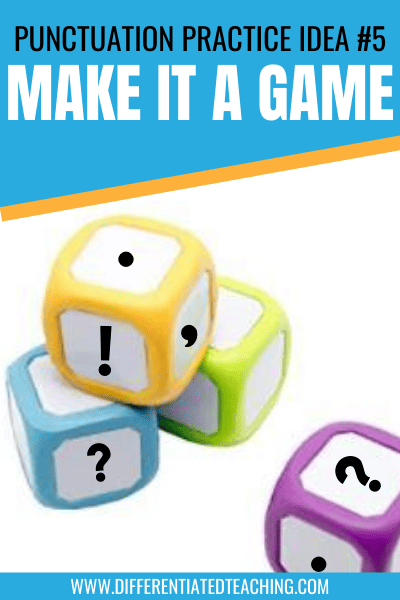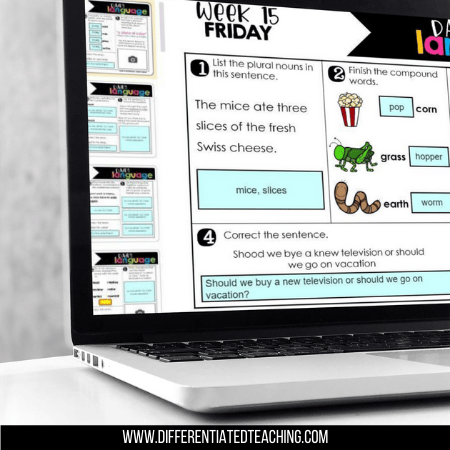5 Engaging Ways to Teach Punctuation
Writing instruction often fits into a small corner of the day. This makes it so challenging to find time to teach grammar, spelling, punctuation, and all the other foundational skills students need to be more effective writers.
While working through the writing process is an important piece of writing instruction, many students needlessly struggle because they were never given formal opportunities to practice skills like grammar and punctuation. There are many signs you might need to beef up your time spent on grammar and editing, but the biggest struggle is finding the time.
Today I wanted to share some fun ways to give your students hands-on practice with punctuation that won’t use a ton of instructional time.

Simple Strategies for Hands-on Punctuation Practice
The thought of grammar lessons can send some children into a deep sleep. It can be an incredibly dull subject if taught using uninventive methods and resources.
However, with creativity and a bit of thought, punctuation for 8 to 11-year-olds can certainly become more exciting.
Here are five suggestions that you could incorporate easily.
1. Use Text…Messaging!
There are several fake SMS generators online, and you can utilize one of these to generate a text conversation between two people. You could choose the names of two pupils within your class.
However, I have always found that using celebrities works far better, and you can target your pupils directly by doing this. Perhaps, you could have JoJo Siwa chatting to Justin Bieber, and that would automatically switch certain children onto this lesson.
The next step is for them to turn this SMS conversation into dialogue using correct punctuation. Sometimes, it is possible to teach speech time and time again, but they just don’t grasp it.
Model it using celebrity text messages, and you may just find that they recall it all correctly. Either way, it makes for great practice and adds interest.

2. Incorporate movement with mixed-up sentences
Butts stuck on seats might seem to certain people like a great lesson, but is there engagement?
Probably not as much as you’d hope to have.
Try getting them up and out of their seats.
Give each small group of children a cut-up sentence. Depending on their ability, you may wish to give them the punctuation to place in the correct places or you could have the option of them visiting a workstation with a range of punctuation to choose from.
Your students should put the words into the correct order and add the right punctuation.
Next, get them to hold up the sentence for the rest of the class to see. Have they got the punctuation correct?
This also provides you with the opportunity to shift words around, and ask why it doesn’t work that way or how it would change the punctuation you use.

If you are working with individual children, you could do a similar activity using post-it notes or magnetic words.
3. Use real world examples for editing practice.
Using photos of actual punctuation mistakes. Stores and restaurants are great places to find examples. You might also check local signs, posters, or websites.
Looking for errors in the world around them can remind kids that adults make punctuation mistakes and they happen regularly. Just because something has been printed and sent out to thousands of homes in a neighborhood does not equate to it being grammatically correct.

Finding errors on signs, advertisements, leaflets, and letters can be a fun way of practicing punctuation. You can also practice other skills (like spelling) this way!
Challenge your learners to find the worst grammar mistake in your local community. It helps children to learn that not everyone is perfect and encourages them to take their lessons outside the classroom.
4. Explore how punctuation impacts meaning.

Punctuation or a lack thereof can completely change the intention of a sentence.
The most famous example is probably ‘eats, shoots and leaves’ when explaining a panda’s habits. We all know that a panda doesn’t devour its food, shoot something and then depart. However, the punctuation is incorrect and makes it sound that way.
Another classic example is ‘Let’s eat Grandma’ rather than ‘Let’s eat, Grandma’ – leaving out that one comma turns someone from being a potentially loving grandchild to a cannibal, encouraging others to join in.
Playing around with punctuation and seeing what hilarious things can happen when it is placed incorrectly or omitted can make a lasting impression. After all, no one wants to be deemed a cannibal, do they?
Here are some great books that give even more examples. These are perfect for your lessons or as a quick, fun read-aloud during small breaks in the day.
- Twenty-Odd Ducks: Why, every punctuation mark counts!
- The Girl’s Like Spaghetti: Why, You can’t Manage without Apostrophes!
- Eats, Shoots & Leaves: Why, Commas Really Do Make a Difference!
- Eats MORE, Shoots, & Leaves: Why, ALL Punctuation Marks Matter!
5. Create a game to practice punctuation.
Create a die with a different type of punctuation on each side. I recommend these dry-erase dice (affiliate link) that you can use again and again in so many different ways.
Get children to roll it and then write a sentence using it correctly. You could do this continuously for them to build up a story with a wide variation of punctuation.
Using dice for this activity means that you can differentiate easily by reducing the number of types, restricting it to three (two of each type), perhaps.

Teaching Punctuation: A Small Piece of the Big Picture
Teaching punctuation is just one small piece of the larger picture when teaching your students the foundations of quality writing.

While some students will naturally pick up these skills, many others need them explicitly taught and consistently practiced to master them.
In addition to the activities above, you might consider incorporating a Daily Language Spiral Review like the one shown.
This format gives your students daily practice with these skills, allowing you to incorporate fun activities and games into your centers or literacy block.
Try a Daily Language Spiral with Your Learners
If you’re looking for a simple and effective way to boost your students’ language skills, I encourage you to try the Daily Language Spiral. This program includes engaging activities to help your students build their vocabulary, grammar, and writing skills over time.
And the best part?
You can test it out with your learners for free. So what are you waiting for? Click your grade level to test it out today and start seeing results in no time!












